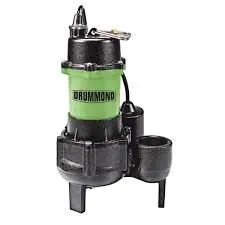English
- Afrikaans
- Albanian
- Amharic
- Arabic
- Armenian
- Azerbaijani
- Basque
- Belarusian
- Bengali
- Bosnian
- Bulgarian
- Catalan
- Cebuano
- Corsican
- Croatian
- Czech
- Danish
- Dutch
- English
- Esperanto
- Estonian
- Finnish
- French
- Frisian
- Galician
- Georgian
- German
- Greek
- Gujarati
- Haitian Creole
- hausa
- hawaiian
- Hebrew
- Hindi
- Miao
- Hungarian
- Icelandic
- igbo
- Indonesian
- irish
- Italian
- Japanese
- Javanese
- Kannada
- kazakh
- Khmer
- Rwandese
- Korean
- Kurdish
- Kyrgyz
- Lao
- Latin
- Latvian
- Lithuanian
- Luxembourgish
- Macedonian
- Malgashi
- Malay
- Malayalam
- Maltese
- Maori
- Marathi
- Mongolian
- Myanmar
- Nepali
- Norwegian
- Norwegian
- Occitan
- Pashto
- Persian
- Polish
- Portuguese
- Punjabi
- Romanian
- Russian
- Samoan
- Scottish Gaelic
- Serbian
- Sesotho
- Shona
- Sindhi
- Sinhala
- Slovak
- Slovenian
- Somali
- Spanish
- Sundanese
- Swahili
- Swedish
- Tagalog
- Tajik
- Tamil
- Tatar
- Telugu
- Thai
- Turkish
- Turkmen
- Ukrainian
- Urdu
- Uighur
- Uzbek
- Vietnamese
- Welsh
- Bantu
- Yiddish
- Yoruba
- Zulu
Telephone: +86 13120555503
Email: frank@cypump.com
Nov . 16, 2024 04:13 Back to list
slurry pumps specification
Understanding Slurry Pump Specifications
Slurry pumps play a crucial role in a variety of industrial applications, particularly in the mining, construction, and waste management sectors. Designed to handle fluids that contain a high percentage of solid particles, slurry pumps are essential for transporting abrasive and corrosive slurries. To select the right slurry pump for a specific application, it is vital to understand the key specifications that define their performance and capabilities.
1. Capacity and Flow Rate
One of the primary specifications to consider when evaluating slurry pumps is their capacity, usually measured in cubic meters per hour (m³/h) or gallons per minute (GPM). The flow rate indicates how much slurry the pump can move within a certain timeframe and is influenced by the pump’s design and motor power. For various applications, the required capacity will vary; therefore, it is imperative to assess the specific needs of the operation to ensure the selected pump can deliver the necessary flow rates without overworking the motor or leading to inefficiencies.
2. Head and Pressure
Slurry pumps are also characterized by their total dynamic head (TDH), which is essential for overcoming the resistance of the system in which they operate. The head refers to the height of the slurry that the pump can lift, and it is usually measured in meters or feet. It is important to define the required head for the specific application, as a pump that cannot generate sufficient pressure may fail to transport the slurry to its desired location.
3. Solid Particle Size and Concentration
Another critical specification is the size and concentration of the solid particles within the slurry. Slurry pumps are designed to handle particles of various sizes, typically classified by the pump’s maximum particle size capacity. Selecting a pump that can accommodate the specific size and concentration of solids found in the slurry is vital to prevent blockages and ensure efficient operation. For instance, a pump may be labeled to handle particles up to 50mm in diameter; understanding this specification helps prevent operational disruptions.
slurry pumps specification

Given that slurry often contains abrasive materials, the construction materials of the pump are crucial to enhance durability and efficiency. Commonly used materials include cast iron, stainless steel, and various elastomers that provide resistance against wear and corrosion. The choice of material depends not only on the nature of the slurry but also on the environmental conditions, such as temperature and exposure to chemicals. High-chrome alloys, for instance, are often utilized in applications with highly abrasive slurries due to their superior wear resistance.
5. Pump Type and Design
There are several types of slurry pumps, including centrifugal pumps and positive displacement pumps. Centrifugal slurry pumps are the most common type used in industrial applications, as they function effectively for transporting large volumes of slurry over long distances. Positive displacement pumps, on the other hand, are capable of handling more viscous slurries with greater pressure and are often used in applications where precise flow control is required. Understanding the operational requirements and the nature of the slurry is essential to choosing the pump type that best fits the application.
6. Energy Efficiency and Maintenance
Energy consumption is an important aspect of any pumping system. Efficient pumps can significantly reduce operational costs, which is why it is essential to consider the efficiency ratings of different slurry pumps. Additionally, maintenance requirements should not be overlooked. A pump that is easy to maintain will save time and resources in the long run. This includes ease of access for regular inspections, replacements of wear parts, and overall servicing.
Conclusion
Selecting the right slurry pump involves a careful evaluation of multiple specifications, including flow rate, head, solid particle size, material composition, pump type, and energy efficiency. By considering these aspects in relation to the specific application, operators can ensure optimal performance and longevity of their pumping systems. Ultimately, understanding slurry pump specifications is integral to maximizing efficiency, minimizing downtime, and achieving a successful operational outcome.
-
ISG Series Vertical Pipeline Pump - Chi Yuan Pumps Co., LTD.|High Efficiency, Energy Saving, Low Noise
NewsJul.30,2025
-
ISG Series Vertical Pipeline Pump- Chi Yuan Pumps|High Efficiency&Low Noise
NewsJul.30,2025
-
ISG Series Vertical Pipeline Pump-Chi Yuan Pumps Co., LTD.|High Efficiency&Energy Conservation
NewsJul.30,2025
-
ISG Series Vertical Pipeline Pump - Chi Yuan Pumps Co., LTD.|Advanced Hydraulic Design&Energy-Efficient Solutions
NewsJul.30,2025
-
ISG Series Vertical Pipeline Pump - Chi Yuan Pumps Co., LTD.
NewsJul.30,2025
-
ISG Series Vertical Pipeline Pump - Chi Yuan Pumps Co., LTD.|energy-efficient fluid handling&industrial durability
NewsJul.30,2025










